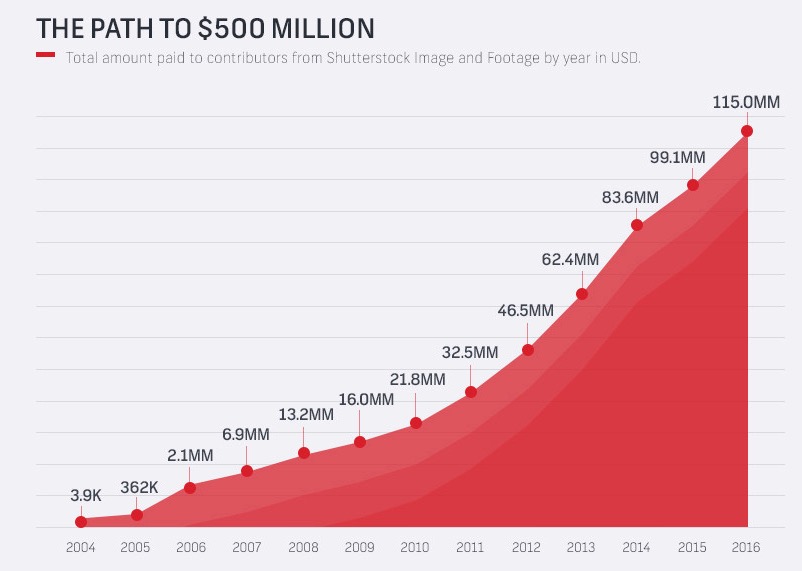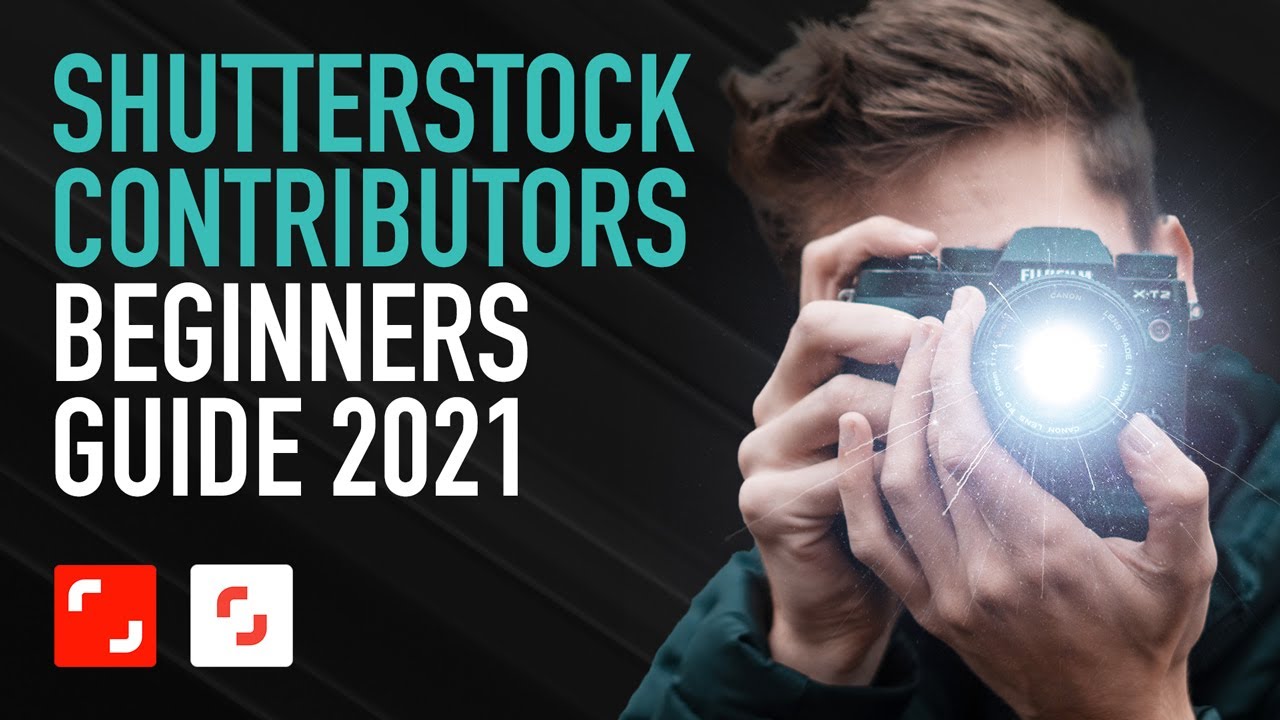Are you passionate about photography and looking for a way to turn your images into income? The Shutterstock Contributor Program might be just what you need. It offers photographers a platform to showcase their work to millions of potential customers worldwide. Whether you’re a hobbyist or a seasoned pro, joining Shutterstock can be a great opportunity to monetize your creativity. In this blog, we’ll explore how the program works and how you can earn money from your photos. Let’s dive into what makes
How Shutterstock Calculates Payments for Photographers

Understanding how Shutterstock pays its contributors can seem a bit complex at first, but once you get the hang of it, it’s pretty straightforward. Essentially, your earnings depend on a few key factors: your contributor level, the type of license purchased, and your exclusive or non-exclusive status.
Here’s a quick rundown of how payments are calculated:
- Contributor Level: Shutterstock assigns levels based on your sales volume. The more you sell, the higher your level, and the better your commission rate becomes. For example, new contributors start at Level 1 with a 15% royalty rate, but as you sell more, you can reach Level 5 with up to 40%.
- Type of License: Shutterstock offers Standard and Enhanced licenses. Standard licenses are for most uses, while Enhanced licenses cover larger quantities or higher-value uses. Payments vary depending on which license the customer purchases.
- Exclusive vs. Non-Exclusive: If you agree to be exclusive with Shutterstock, you might earn a higher percentage on your sales, but you won’t sell the same images elsewhere. Non-exclusive contributors can sell their images on multiple platforms, which might affect potential earnings but offers more flexibility.
Shutterstock also pays contributors based on the size of the sale. For example, a standard license sale might earn you a different percentage than an enhanced license. The platform calculates your earnings after each sale, factoring in your current royalty percentage based on your contributor level.
It’s worth noting that Shutterstock provides detailed dashboards where you can track your earnings, see which images are performing best, and understand your payout history. Payments are usually made monthly via PayPal or bank transfer once your earnings reach a certain threshold. So, the more you upload and promote your images, the more you stand to earn—making it an exciting platform for photographers eager to monetize their work!
Factors Affecting Earnings on Shutterstock

When it comes to earning money as a Shutterstock contributor, it’s important to understand that your income isn’t just about uploading a bunch of photos and hoping for the best. Several factors come into play that can influence how much you make per download—and overall. Let’s break down some of the main elements that can impact your earnings:
Quality of Your Photos
First impressions matter! Shutterstock prioritizes high-quality, sharp, well-composed images. Contributors whose photos meet professional standards tend to earn more because their images are more likely to be purchased. Investing time in learning photography techniques, editing skills, and understanding what buyers want can really boost your earnings.
Relevance and Keywords
Even the most stunning photo won’t sell if it’s not discoverable. Proper keywording is crucial. Use accurate, descriptive keywords that match what buyers are searching for. Think about the keywords you’d use if you were looking for that image. The better your tags, the more views and downloads your photos will get, which directly impacts your income.
Image Popularity and Trends
Trending topics or seasonal themes can significantly boost your earnings. For example, images related to current events, holidays, or popular themes like remote work, sustainability, or technology tend to sell more. Staying updated on what’s trending can help you create content that’s in demand.
Download Type and License
Shutterstock offers different types of licenses—standard and enhanced. Typically, standard licenses are cheaper and generate lower earnings per download, whereas enhanced licenses are more expensive and pay more. Contributing images that are suitable for both license types can help maximize your earning potential.
Contributor Level and Portfolio Size
Your level on Shutterstock (from New Contributor up to Exclusive Contributor) can influence your earnings as well. Generally, the more images you upload and the more consistent your quality, the higher your earning potential. Building a large, diverse portfolio also increases the chances of making consistent sales.
Restrictions and Limits
Lastly, Shutterstock has some rules about how many images you can upload and the types of images they accept. Staying within these guidelines ensures your images are approved and available for sale, which keeps your earning stream steady.
In summary, your earnings are a mix of quality, relevance, market trends, licensing types, and your overall activity as a contributor. Focusing on these factors can help you optimize your income on Shutterstock over time.
Average Earnings per Photo on Shutterstock

One question many new contributors have is, “How much can I really earn per photo?” The honest answer is: it varies a lot. But to give you a general idea, let’s look at the typical range of earnings you might expect per download, and what influences that number.
Typical Earnings Range
On average, contributors earn around $0.25 to $2.50 per download for standard licenses. For enhanced licenses, which are more expensive, the payout can be significantly higher—often between $10 and $50 or more per download. Keep in mind, these are approximate figures and can fluctuate based on several factors.
What Affects the Per-Photo Earnings?
- License Type: Standard licenses pay less per download, while enhanced licenses pay more.
- Contributor Level: Higher levels often unlock better royalty rates.
- Image Popularity: Well-targeted, high-quality images tend to sell more frequently.
- Market Demand: Photos in trending categories may fetch higher earnings.
- Exclusive vs. Non-Exclusive: Exclusive contributors may earn higher rates, but with stricter restrictions.
Estimating Your Earnings
Suppose you upload 100 images, and each image gets just 1 download per month at an average payout of $1 for a standard license. That’s about $100/month from those images. If some images are in high demand or are licensed for enhanced use, your earnings could be higher.
Long-Term Potential
It’s also worth noting that some photos can continue earning for years after you upload them, especially if they remain relevant and are frequently downloaded. Over time, this can turn into a steady passive income stream, especially if you build a large and targeted portfolio.
Final Thoughts
While the average earnings per photo might seem modest at first, growing your portfolio, optimizing your keywords, and producing high-demand images can significantly boost your income. Remember, patience and consistency are key—your earnings can grow as you refine your skills and understand the market better.
Tips to Maximize Your Shutterstock Photography Income
So, you’re eager to boost your earnings as a Shutterstock contributor—great! The good news is, there are several practical strategies you can implement to increase your income and make the most of your photography skills. Let’s dive into some of the top tips that can help you maximize your Shutterstock photography income.
1. Focus on High-Demand Topics
Research what buyers are looking for. Trending themes like remote work, sustainability, health, and technology are often in high demand. Keep an eye on Shutterstock’s popular searches or browse through their top-selling images to identify gaps you can fill with your unique perspective.
2. Upload Consistently and Regularly
Consistency is key. The more high-quality images you upload, the higher your chances of making sales. Establish a routine—perhaps dedicate a few hours each week to uploading new photos. Over time, this builds your portfolio and increases your visibility on the platform.
3. Optimize Your Keywords and Titles
Descriptive and accurate keywords are essential. Use relevant tags that reflect the content, mood, and usage context of your photos. Think about what buyers might search for and include synonyms. Clear titles also help your images show up in search results.
4. Create Versatile and Commercially Appealing Images
Stock buyers often look for images that are versatile and suitable for various purposes. Focus on clean compositions, natural lighting, and subjects that are broadly relatable—people working, family scenes, business concepts, nature, and travel. The more versatile your images, the more likely they are to sell.
5. Leverage Seasons and Events
Plan your shoots around holidays, seasons, and events—like Christmas, back-to-school, or summer vacations. These images tend to sell well during specific times of the year. Keep a calendar of upcoming events to stay ahead and upload timely content.
6. Engage with the Shutterstock Contributor Community
Join forums, social media groups, or Shutterstock’s contributor communities. Sharing experiences, tips, and feedback can inspire new ideas and improve your work. Plus, learning from others’ successes and mistakes can help you refine your approach.
7. Keep Improving Your Skills
Invest in your photography skills—learn new techniques, upgrade your gear if possible, and stay updated on industry trends. High-quality, technically sound images tend to perform better and earn higher commissions.
By applying these tips consistently, you’ll be well on your way to increasing your Shutterstock earnings. Remember, patience and persistence are key—building a successful portfolio takes time, but with effort, you’ll see your income grow.
Conclusion and Final Thoughts on Shutterstock Contributor Payments
Wrapping up, understanding how Shutterstock pays its contributors is fundamental if you want to turn your passion for photography into a reliable income stream. While the platform’s payment structure might seem complex at first, breaking it down into manageable pieces shows that it’s quite straightforward once you get the hang of it.
To recap, Shutterstock offers a tiered royalty system based on your lifetime earnings and the type of license purchased. The more you upload, the more you can earn—especially if your images are popular and meet the needs of buyers. Remember, quality, relevance, and consistency are your best allies in boosting your income.
Keep in mind that payments are made monthly via PayPal or Skrill, with minimum payout thresholds that you should aim to reach. As you grow your portfolio and improve your skills, you’ll likely see your earnings increase. Patience and persistence will serve you well in this journey.
Ultimately, becoming a successful Shutterstock contributor isn’t just about earning money—it’s also about sharing your unique perspective and creative vision with the world. With the right approach, dedication, and strategic efforts, you can turn your photography hobby into a meaningful source of income. Happy shooting, and here’s to your success as a Shutterstock contributor!


